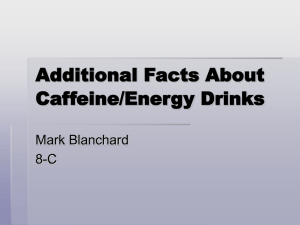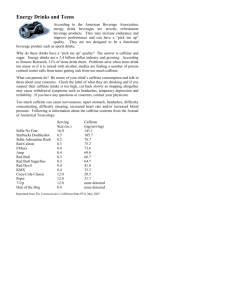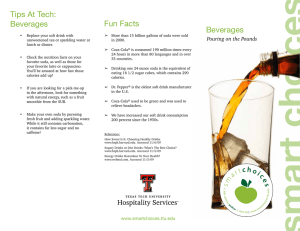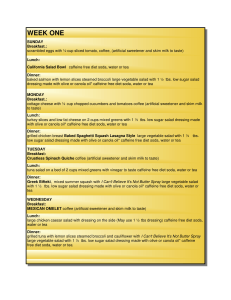Subject Area(s) Associated Unit Associated Lesson
advertisement
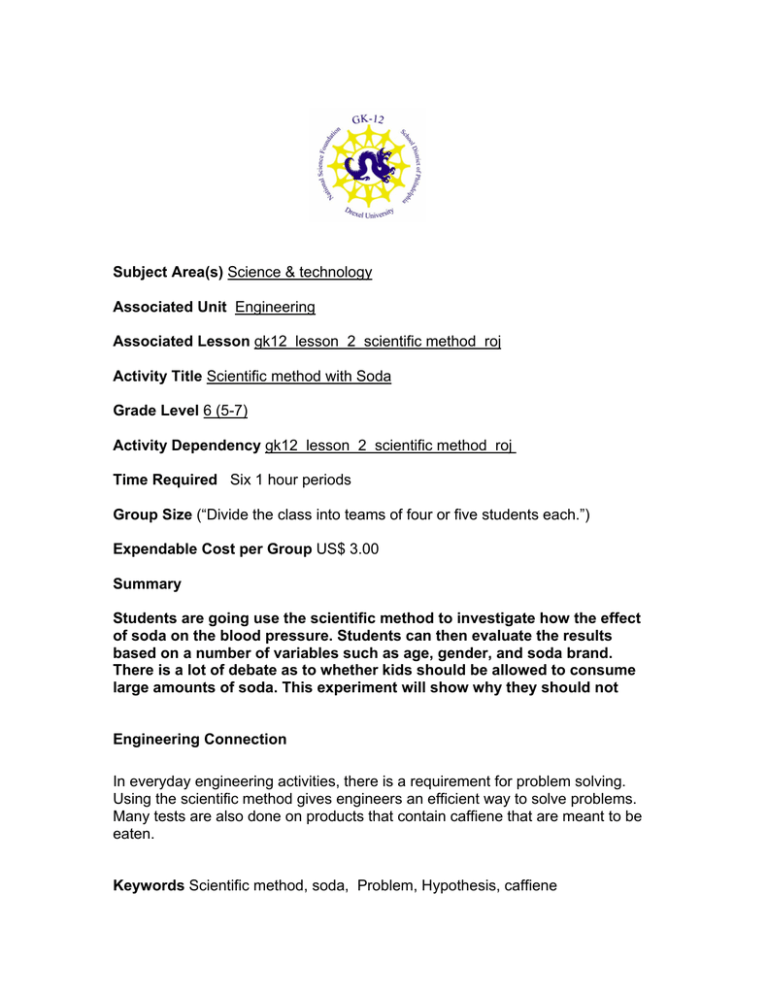
Subject Area(s) Science & technology Associated Unit Engineering Associated Lesson gk12_lesson_2_scientific method_roj Activity Title Scientific method with Soda Grade Level 6 (5-7) Activity Dependency gk12_lesson_2_scientific method_roj Time Required Six 1 hour periods Group Size (“Divide the class into teams of four or five students each.”) Expendable Cost per Group US$ 3.00 Summary Students are going use the scientific method to investigate how the effect of soda on the blood pressure. Students can then evaluate the results based on a number of variables such as age, gender, and soda brand. There is a lot of debate as to whether kids should be allowed to consume large amounts of soda. This experiment will show why they should not Engineering Connection In everyday engineering activities, there is a requirement for problem solving. Using the scientific method gives engineers an efficient way to solve problems. Many tests are also done on products that contain caffiene that are meant to be eaten. Keywords Scientific method, soda, Problem, Hypothesis, caffiene Educational Standards • Science: • Science: A.1, A.2, E.8, F.3, F.4, F.5, G.1, G.3, E.2, E.1 Pre-Req Knowledge Students should have limited knowledge of the scientific method. Learning Objectives After this activity, students should be able to: • Describe the basic procedures engineers follow to solve problems Materials List Each group needs: • 1 8 oz cup • 1 can of soda Introduction / Motivation It is generally understood that coffee, tea and soft drinks will elevate your blood pressure, and that elevated pressure could lead to a heart attack or a stroke. Caffeine is the most widely used drug in the world. It has been known to produce undesirable side effects such as nervousness, insomnia, irregular heart beat, high blood sugar and cholesterol levels, excess stomach acids and heartburn. Caffeine stimulates the central nervous system and can cause mild alertness, heightened anxiety and body tension. It can be habit forming. It depends on how you take it and how much you take. Age and size have a lot to do with it. Vocabulary / Definitions Caffeine - A stimulant Blood pressure – This refers to the pressure exerted by blood on the walls of the blood vessels Word Definition Procedure • • • You must first test the subject's blood pressure before consuming any of the drinks. Keep careful charts, make precise notes Test half of the subjects with soft drinks like Coke and the other half with Mountain Dew. Each contains about 80 mg of caffeine. Check each subject's blood pressure again, after they have consumed the caffeinated drinks, thirty minutes later, and again 60 minutes later. Blood pressure readings can often vary from reading to reading. Before the Activity • Gather materials • Talk to students about caffeine and get caffeine content in various soda brands. With the Students 1. Divide the class into groups of four to five students each. 2. You must first test the subject's blood pressure before consuming any of the drinks. Keep careful charts, make precise notes. Safety Issues • Use blood pressure monitor carefully. Assessment The teacher should have students plot their results on graph paper. They should also record their experiment steps and results in log books, as well as developing conclusions on the activity. Owner Rodney Johnson, Drexel University GK 12

